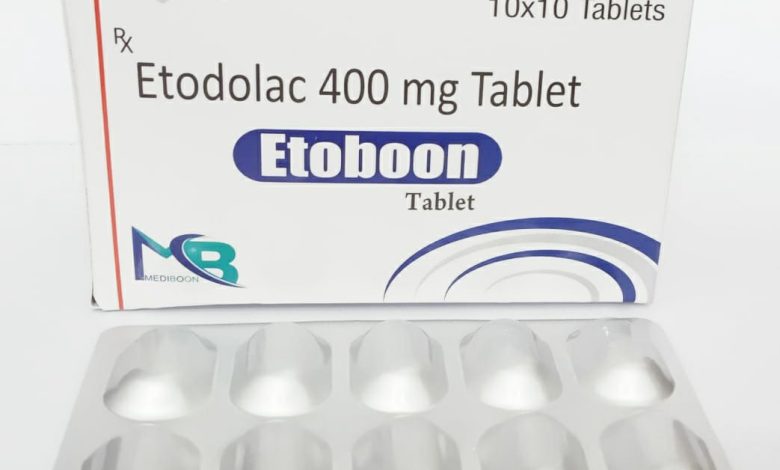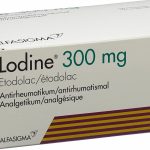Is Etodolac Like Tramadol?

Etodolac and tramadol are two different medications used to treat different types of pain. While there may be some similarities between the two drugs, they have different mechanisms of action, side effects, and uses.
Etodolac is a nonsteroidal anti-inflammatory drug (NSAID) used to relieve pain and inflammation associated with various conditions such as osteoarthritis, rheumatoid arthritis, and menstrual cramps. It works by inhibiting the production of prostaglandins, which are responsible for inflammation and pain in the body. Etodolac is available in tablet and capsule form and is taken orally.
Tramadol, on the other hand, is a pain medication that is used to treat moderate to severe pain. It belongs to a class of drugs called opioid analgesics, which work by binding to opioid receptors in the brain and spinal cord, reducing the perception of pain. Tramadol is available in immediate-release and extended-release formulations and is taken orally.
While both drugs are used to treat pain, they have some important differences. Here are some ways etodolac and tramadol differ from each other:
Mechanism of Action
Etodolac works by inhibiting the production of prostaglandins, which are involved in inflammation and pain. It blocks the action of an enzyme called cyclooxygenase (COX), which is responsible for producing prostaglandins.
Tramadol, on the other hand, works by binding to opioid receptors in the brain and spinal cord, reducing the perception of pain. It also inhibits the reuptake of serotonin and norepinephrine, which are neurotransmitters involved in pain perception.
Side Effects
Both etodolac and tramadol can cause side effects, but they differ in their severity and frequency. Some common side effects of etodolac include nausea, vomiting, stomach pain, diarrhea, and headache. It can also cause more serious side effects such as gastrointestinal bleeding, kidney damage, and an increased risk of heart attack or stroke.
Tramadol can also cause side effects such as nausea, vomiting, constipation, dizziness, and headache. It can also cause more serious side effects such as respiratory depression, seizures, and serotonin syndrome.
Uses
In terms of uses etodolac is primarily used to relieve pain and inflammation associated with various conditions such as osteoarthritis, rheumatoid arthritis, and menstrual cramps. It can also be used to treat other types of pain such as dental pain, postoperative pain, and musculoskeletal pain.
Tramadol, on the other hand, is primarily used to treat moderate to severe pain. It is often prescribed for conditions such as chronic pain, cancer pain, and postoperative pain.
Dosage
When it comes to how they are taken, the dosage of etodolac and tramadol will depend on various factors such as the patient’s age, weight, and medical history. The dosage will also depend on the severity of the pain and the intended use of the medication.
Etodolac is usually taken two to three times a day with food or milk. The usual starting dose is 200-400 mg per day, which can be increased up to 600 mg per day if necessary.
Tramadol is available in immediate-release and extended-release formulations. The usual starting dose for immediate-release tramadol is 50-100 mg every 4-6 hours as needed. The maximum daily dose is 400 mg. The usual starting dose for extended-release tramadol is 100 mg once a day, which can be increased up to 300 mg per day if necessary.
Interaction with other drugs
Both etodolac and tramadol can interact with other drugs, which may lead to serious side effects or reduce the effectiveness of the medication. Here are some examples of drugs that may interact with etodolac or tramadol:
Etodolac:
• Aspirin and other NSAIDs (such as ibuprofen, naproxen): Taking etodolac with other NSAIDs can increase the risk of gastrointestinal bleeding and other serious side effects.
• Anticoagulants (such as warfarin): Etodolac can increase the risk of bleeding when taken with anticoagulants.
• Lithium: Etodolac can increase the levels of lithium in the blood, which can be toxic.
• Methotrexate: Etodolac can increase the levels of methotrexate in the blood, which can be toxic.
Tramadol:
• Other opioids (such as morphine, codeine): Taking tramadol with other opioids can increase the risk of respiratory depression and other serious side effects.
• Benzodiazepines (such as alprazolam, diazepam): Tramadol can interact with benzodiazepines and increase the risk of sedation, respiratory depression, and other serious side effects.
• Serotonin reuptake inhibitors (such as fluoxetine, sertraline): Tramadol can interact with serotonin reuptake inhibitors and increase the risk of serotonin syndrome, a potentially life-threatening condition.
• Monoamine oxidase inhibitors (MAOIs): Tramadol should not be taken with MAOIs, as it can cause serotonin syndrome and other serious side effects.
It is important to inform your doctor or healthcare provider of all the medications, supplements, and herbal products you are taking before starting etodolac or tramadol to avoid any potential drug interactions.





